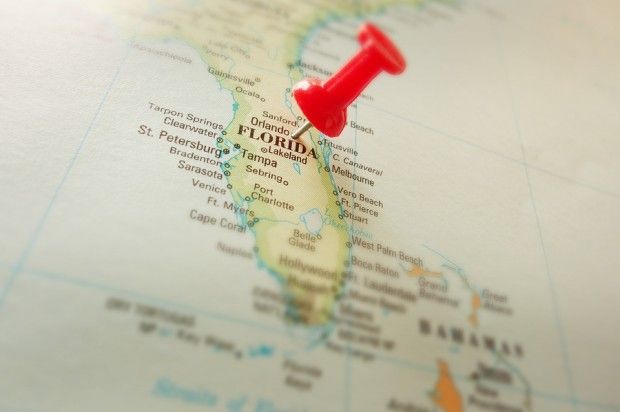Providing a preliminary analysis of June 1, 2020 reinsurance renewals in Florida, Guy Carpenter reported that COVID-19 accelerated the firming of the reinsurance market, with carriers facing a combination of price hikes and overly broad pandemic-driven exclusions.
“Driven by a focus to achieve an absolute communicable disease exclusion, many proposed wordings were so broad that they risked excluding otherwise covered losses such as hurricane or earthquake if there was any perceived (direct or indirect) contribution to the ultimate loss from communicable diseases,” the reinsurance intermediary said in a post on its GC Capital Ideas blog Monday.
Describing the June 1 renewals as the “first genuine test” of the reinsurance market since COVID-19 outbreaks spurred lockdowns around the world, Guy Carpenter said that most Florida cedents experienced double-digit reinsurance rate increases on property-catastrophe renewals. According to the blog item, terms and conditions also tightened, with reinsurers not only imposing communicable disease exclusions but also removing cascading features from reinsurance programs. (Guy Carpenter representatives explained that cascading refers to reinsurance that pays losses out at a lower attachment level after certain conditions are met as opposed to one consistent attachment point under any circumstances.)
Guy Carpenter said it engaged with reinsurers and other industry groups to raise these concerns about proposed communicable disease exclusion wordings and that the reinsurance broker was successful in getting language modified so that “cedents did not inadvertently give up critical coverage.”
Beyond those issues, other coverage restrictions did not materialize, the broker reported.
Commenting on capacity in the same blog post, and in a later post on Tuesday, Guy Carpenter said that “deployable capital among both traditional and alternative markets tightened at the June 1 renewal.”
In a chart depicting pre- and post-COVID market conditions, the firm said there was “increasingly disciplined deployment” of “abundant capacity” pre-COVID, also noting factors like a prolonged soft market, social inflation and “changing views of risk” as contributors to market firming.
Post-COVID, firming has accelerated with reinsurers now concerned about their total risk profiles amidst volatile financial markets, uncertain about potential losses and facing a lack of new capital inflows as a result of financial market conditions.
“Third-party capital inflows into collateralized reinsurance and sidecar vehicles especially have slowed significantly, as investors assess the uncertainty associated with COVID-19 and prepare for the possibility of further trapped capital (compounding losses sustained over the last three years from a succession of destructive catastrophes and subsequent creep),” Guy Carpenter observed.
Separately, during first-quarter earnings conference calls, executives like John Doucette, CEO of the Reinsurance Division at Everest Re, noted that “opportunistic capital” was heading for the exits, as alternative capital investors started to rethink the “thesis that reinsurance is a non-correlated asset class” and deal with the possibility of more trapped capital.
During the RenaissanceRe earnings conference call, CEO Kevin O’Donnell suggested that his company would hold back some capital, opting not to deploy it on better opportunities outside of Florida after June 1.
“Due to the heightened uncertainty from the pandemic, we will continue to hold excess capital and remain highly liquid. This may have a drag on earnings, but it is the right call at this time,” O’Donnell said. “Also, we’re hoping to find opportunities in the near future and want to hold some dry powder in anticipation,” he added.
Later, he expanded on the idea making specific reference to Florida. First alluding to remarks he had made pre-COVID during a year-end earnings conference call, O’Donnell noted that he had told analysts and investors back then that RenaissanceRe was prepared to reduce its exposure in Florida if rates were not sufficient.
“Since then, the world has changed. We are now in an environment where capital is scarce and risk is abundant,” he continued. “I am optimistic about our ability to access the best risks in the coming months. Even with rates improving in Florida, we may instead hold capacity as we expect to see better opportunities in the second half of the year.”
“That said, we have long-term relationships with a number of high-quality carriers that we expect to maintain. For the remainder of the Florida market, we have raised the bar and will remain disciplined in the face of competition,” he said.





















 Is the AI Boom a Bubble Waiting to Pop? Here’s What History Says
Is the AI Boom a Bubble Waiting to Pop? Here’s What History Says  Federal Aviation Notice Warned of Slackline Before Deadly Arizona Helicopter Crash
Federal Aviation Notice Warned of Slackline Before Deadly Arizona Helicopter Crash  Underwriter, Actuary Fears of AI Drop; Work Needed on Collaboration
Underwriter, Actuary Fears of AI Drop; Work Needed on Collaboration  Executives on the Move at Liberty Mutual, Cowbell, W. R. Berkley
Executives on the Move at Liberty Mutual, Cowbell, W. R. Berkley 


